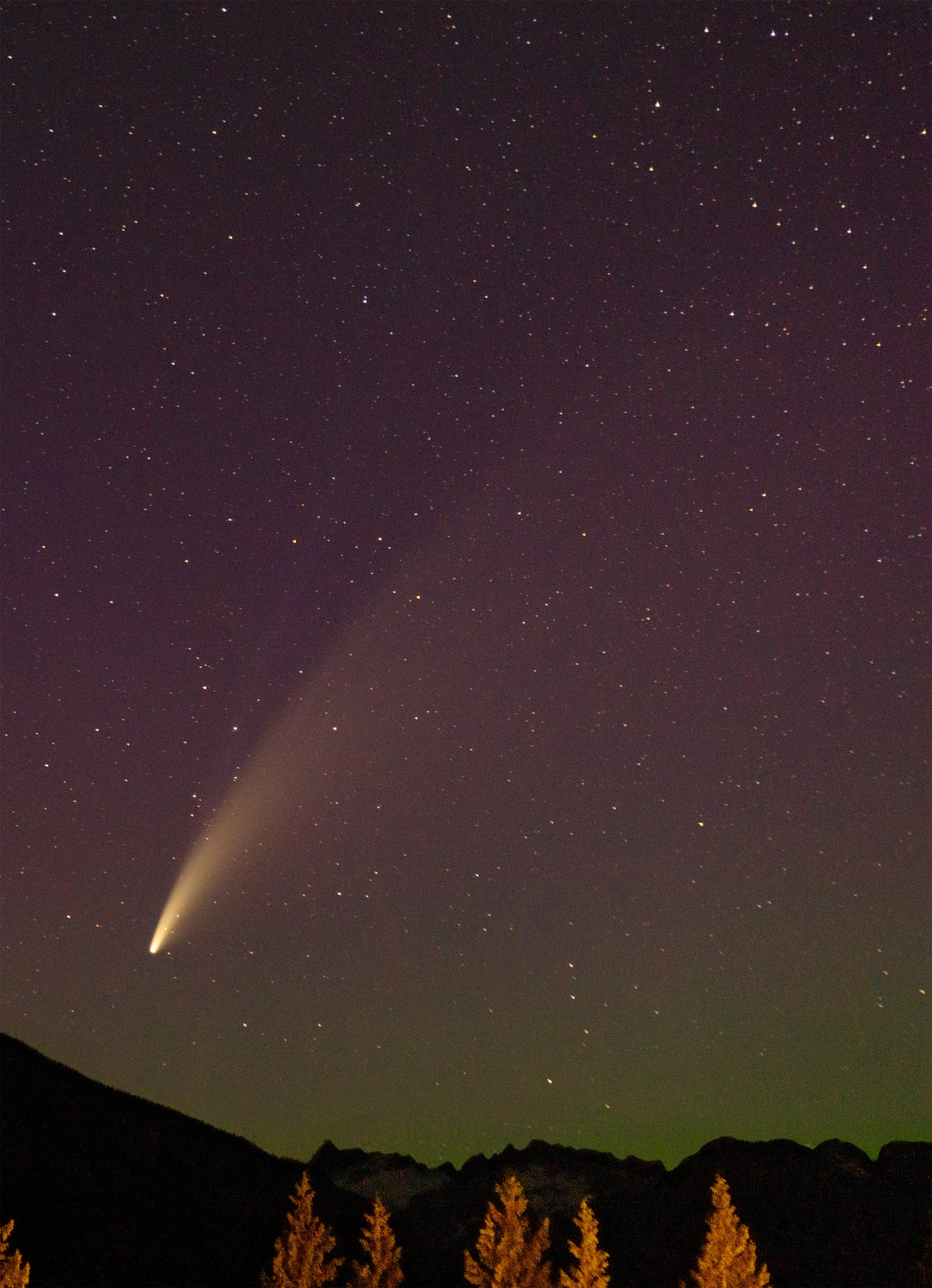
How to see comet C/2022 E3 (ZTF)
The newest relatively bright comet to visit the inner solar system will be at its best during the end of January and beginning of February 2023.
You may have heard it called the “Green Comet”, but don’t be fooled, you won’t see any green unless you take long exposure photos!
The photo behind this text was taken by Moon Guy Next Door of comet NEOWISE in 2020
How to see the comet in January and early February…
As you've probably heard, there's a comet (called C/2022 E3 (ZTF)) visiting our sky so I thought I'd give you an overview of how to see it!
The below image shows the path of the comet from January 17 to February 5. The wide north-facing view represents the approximate orientation of the sky around 11pm, from the 49th parallel north.
First, even bright comets are many, many times less bright than the moon, so it's important to get as far away from light pollution as possible. It may not be visible to the naked eye yet, even from dark skies, so you may need binoculars to see it. If you don't have binoculars, it will hopefully get bright enough to see with the naked eye between now and February 1st! Comet brightness is impossible to predict accurately, though, so no guarantees.
Here are a few good times to locate it using relatively bright stars. You can use a free astronomy app like SkySafari to help you learn the constellations.
January 22-23, near the star Edasich in the constellation of Draco. This is not a very bright star, but is visible to the naked eye.
January 26-27, near the star Kochab in the constellation of Ursa Minor. It's a relatively bright star that's part of the bowl of the Little Dipper.
February 1, near the star HR 2209 in the constellation of Camelopardalis. This star should be just visible to the naked eye under a dark sky. Feb 1 is when the comet is closest to the Earth!
February 4-5, near the bright star Capella in the constellation of Auriga. This is one of the brightest stars in the night sky and will be almost directly overhead (zenith) around 11pm, so it's a great marker for helping you find the comet!
I suggest trying to see it between January 22 and 27 if possible, because the moon is still going to be out of the way. By Feb 5th, the moon is full and could make it a lot harder to spot the faint comet, and after that, the comet will quickly fade as it recedes back into the outer solar system...
Here are some binocular suggestions for viewing this comet:
GREAT ENTRY-LEVEL CHOICE: Cometron 7x50
BEST VERSATILITY: Skymaster 9x63
MOST POWERFUL: Skymaster 15x70
And a couple of good choices for telescopes:
Most affordable and easiest to operate - great for kids: Starsense Explorer LT 80AZ
Next step up, bigger size will give you a brighter view of the comet: Starsense Explorer DX 130AZ
*Disclosure: I only recommend products I would use myself. This website contains affiliate links that may earn me a small commission at no additional cost to you. These affiliate links are provided by All-Star Telescope, a dedicated distributor of astronomy equipment, and they allow me to keep this website completely ad-free. Thank you for your support!

